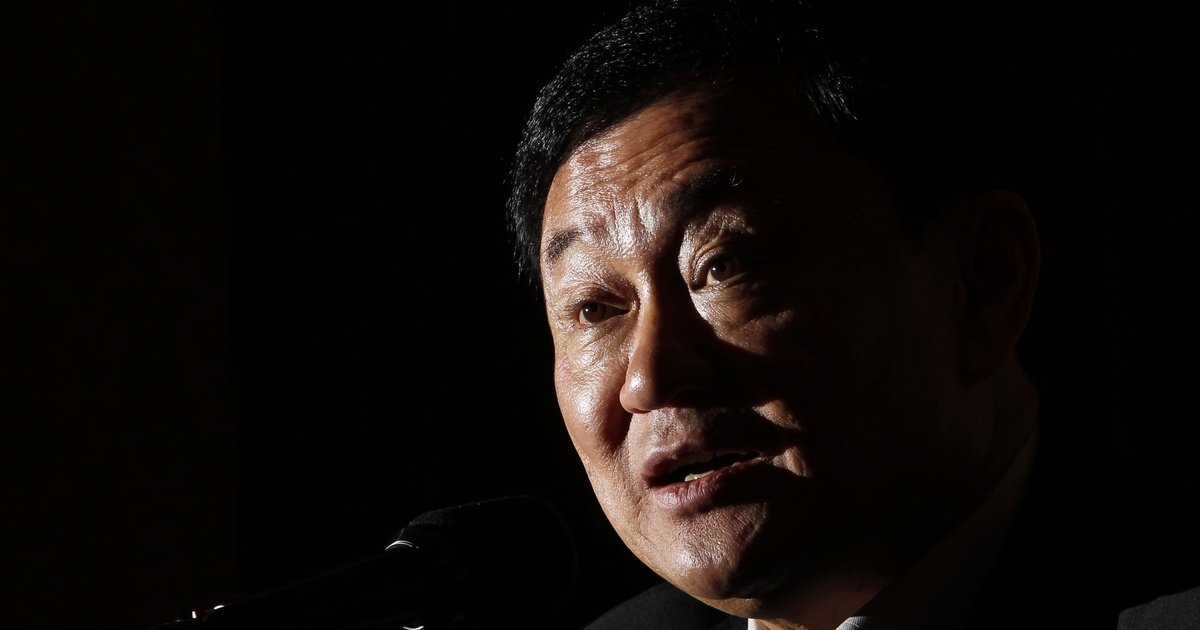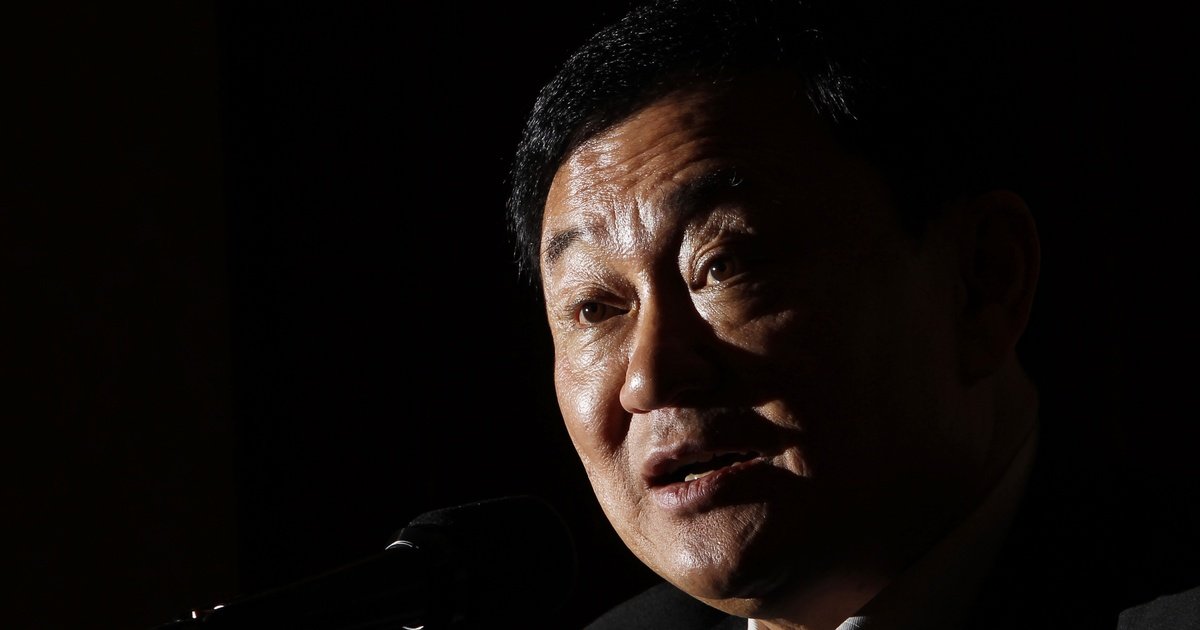Analyzing The Fall Of The Shinawatra Dynasty In Thailand

Welcome to your ultimate source for breaking news, trending updates, and in-depth stories from around the world. Whether it's politics, technology, entertainment, sports, or lifestyle, we bring you real-time updates that keep you informed and ahead of the curve.
Our team works tirelessly to ensure you never miss a moment. From the latest developments in global events to the most talked-about topics on social media, our news platform is designed to deliver accurate and timely information, all in one place.
Stay in the know and join thousands of readers who trust us for reliable, up-to-date content. Explore our expertly curated articles and dive deeper into the stories that matter to you. Visit Best Website now and be part of the conversation. Don't miss out on the headlines that shape our world!
Table of Contents
The Crumbling Dynasty: Analyzing the Fall of the Shinawatra Family's Political Power in Thailand
The Shinawatra family's dominance in Thai politics, a defining feature of the 21st century, has dramatically declined. This isn't a sudden collapse, but rather a gradual erosion of power marked by coups, protests, and evolving societal dynamics. Understanding this fall requires analyzing the complex interplay of political strategies, social divisions, and the enduring influence of Thailand's powerful military establishment.
The Rise and Reign of Thaksin Shinawatra:
The Shinawatra dynasty's ascent began with Thaksin Shinawatra's landslide victory in 2001. His populist policies, focusing on rural development and healthcare initiatives like the 30 baht healthcare scheme, resonated deeply with Thailand's largely rural population. This success, however, simultaneously alienated Bangkok's elite and the military, who viewed his policies as undermining traditional power structures. His strongman leadership style, while popular with many, also fueled accusations of authoritarianism and corruption.
The 2006 Coup and its Aftermath:
The 2006 military coup, which ousted Thaksin, marked a pivotal moment. While the coup was justified on grounds of corruption and undermining the monarchy, many saw it as a blatant power grab by the elite and the military, further solidifying the deep political divides within Thailand. Thaksin's subsequent exile and the rise of his sister, Yingluck Shinawatra, as Prime Minister, only intensified the conflict.
Yingluck Shinawatra and the Continued Struggle:
Yingluck's premiership, while initially successful, ultimately mirrored her brother's fate. Her government's ambitious rice subsidy scheme, although aimed at boosting rural incomes, was plagued by accusations of corruption and mismanagement. This, coupled with ongoing protests from the anti-government "yellow shirt" movement, led to her impeachment and subsequent exile.
The Role of the Military and the Constitutional Court:
The military's repeated interventions, alongside the actions of the Constitutional Court, have played a crucial role in dismantling the Shinawatra's political influence. The court's decisions, often seen as politically motivated, have consistently targeted Shinawatra allies and weakened their political standing. This has effectively created a system where the military and judiciary can act as checks on any populist movement perceived as a threat to the established order.
Social Divisions and the Future of Thai Politics:
The fall of the Shinawatra dynasty reveals deep-seated societal divisions in Thailand. The conflict isn't simply about personalities; it's a battle between competing visions for the country's future – a clash between populist policies aimed at improving the lives of the rural poor and the conservative establishment’s desire to maintain the status quo.
Looking Ahead:
While the Shinawatra family's direct influence on Thai politics has significantly diminished, their legacy remains potent. The underlying social and economic inequalities that fueled their rise persist, suggesting that the struggle for political power in Thailand is far from over. The future will likely see continued political instability and a complex interplay between populist movements, the military, and the judiciary. Analyzing this ongoing power struggle requires a nuanced understanding of Thailand's unique historical context and its enduring social and political fractures.
Keywords: Shinawatra dynasty, Thaksin Shinawatra, Yingluck Shinawatra, Thai politics, military coup, Thailand, political instability, populist movement, Constitutional Court, social divisions, rice subsidy scheme, 30 baht healthcare scheme, yellow shirt movement, red shirt movement.

Thank you for visiting our website, your trusted source for the latest updates and in-depth coverage on Analyzing The Fall Of The Shinawatra Dynasty In Thailand. We're committed to keeping you informed with timely and accurate information to meet your curiosity and needs.
If you have any questions, suggestions, or feedback, we'd love to hear from you. Your insights are valuable to us and help us improve to serve you better. Feel free to reach out through our contact page.
Don't forget to bookmark our website and check back regularly for the latest headlines and trending topics. See you next time, and thank you for being part of our growing community!
Featured Posts
-
 Thailands New Cabinet Approved Amidst Phone Call Scandal
Jul 01, 2025
Thailands New Cabinet Approved Amidst Phone Call Scandal
Jul 01, 2025 -
 Wgca Announces 2024 25 All American Scholar Team Chi And Mc Cauley Among Honorees
Jul 01, 2025
Wgca Announces 2024 25 All American Scholar Team Chi And Mc Cauley Among Honorees
Jul 01, 2025 -
 Death Stranding 2 Subtletys Demise In Kojimas Latest
Jul 01, 2025
Death Stranding 2 Subtletys Demise In Kojimas Latest
Jul 01, 2025 -
 Matching Outfits Shared Passion Tiger And Charlie Woods Golfing Style
Jul 01, 2025
Matching Outfits Shared Passion Tiger And Charlie Woods Golfing Style
Jul 01, 2025 -
 Death Stranding 2 Unraveling The On The Beach Ending
Jul 01, 2025
Death Stranding 2 Unraveling The On The Beach Ending
Jul 01, 2025
Latest Posts
-
 Illinois Womens Golf Celebrates Five Wgca All American Scholars
Jul 01, 2025
Illinois Womens Golf Celebrates Five Wgca All American Scholars
Jul 01, 2025 -
 Topuria Vs Makhachev Cormiers Bold Prediction Shakes Up The Ufc Lightweight Division
Jul 01, 2025
Topuria Vs Makhachev Cormiers Bold Prediction Shakes Up The Ufc Lightweight Division
Jul 01, 2025 -
 Understanding The Demise Of Thailands Powerful Shinawatra Family
Jul 01, 2025
Understanding The Demise Of Thailands Powerful Shinawatra Family
Jul 01, 2025 -
 Ilia Topuria Rising Star Or Makhachevs Next Victim Cormier Offers Insight
Jul 01, 2025
Ilia Topuria Rising Star Or Makhachevs Next Victim Cormier Offers Insight
Jul 01, 2025 -
 Jamal Roberts American Idol Winner Refuses Key To City Amidst Controversy
Jul 01, 2025
Jamal Roberts American Idol Winner Refuses Key To City Amidst Controversy
Jul 01, 2025
